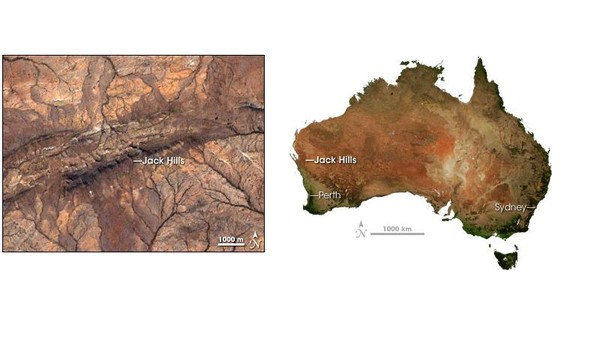A single zircon out of 10,000 found in Jack Hills in Western Australia contains carbon containing compounds that are at least 4.1 billion years of age. The elementary composition of the carbon compounds indicate that they were produced by some type of organic life. Elizabeth A. Bell with the Department of Earth, Planetary, and Space Sciences at the University of California at Los Angeles and colleagues from Stanford University reported the discovery in the edition of the journal Proceedings of the National Academy of Sciences.
The zircon had no factures that would have allowed any carbon containing matter to have been entrapped into the mineral over time. The rock itself and the carbon in the rock were dated to an age of 4.1 billion years using uranium-lead dating methods. The carbon compounds were identified as mainly graphite in origin with an epoxide function using Raman spectra and SIMS. The zircon had four carbon inclusions that are consistent in composition. The carbon was incorporated in the zircon when the rock was in a liquid state.
There are no indications that the zircon has an origin that is extraterrestrial. The carbon is 300 million years older than the oldest known carbon containing compound that came from some form of life process on Earth. A single rock is not used as a basis to claim that life of some form existed on Earth over four billion years ago but the evidence does suggest that a carbon reaction that is essential to life did occur over four billion years ago.















